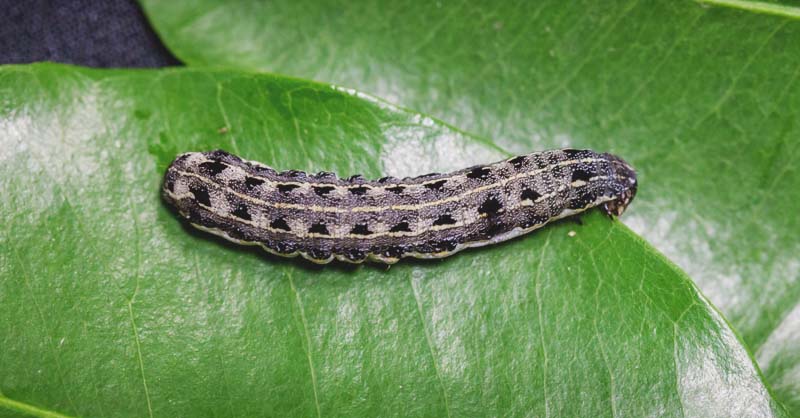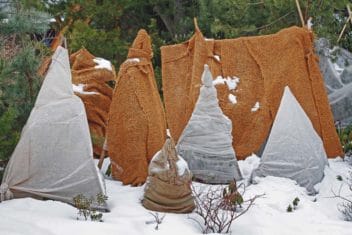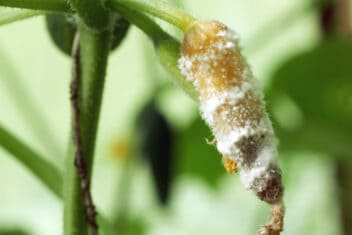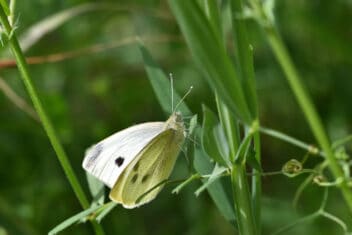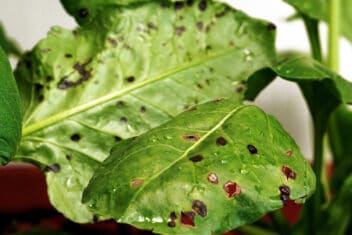Have you noticed your garden isn’t thriving like you’d hoped it would?
Does it appear as though something is attacking your plants from the ground up? Then you may have a cutworm problem.
I’m going to walk you through how to recognize cutworms, prevent them from establishing themselves in your garden, and also how to handle a cutworm infestation.
If you’re interested in protecting your garden from this pest, you must have this information. Here’s what you should know to defeat cutworms:

What is a Cutworm?
A cutworm is the caterpillar state (or larvae) of a variety of nocturnal moths. These moths don’t usually cause any damage once grown (besides laying more eggs) in your garden.
However, their babies tend to wreak havoc on your growing plants. They resemble grubs and can be a variety of colors (solid, striped, or spotted.)
Cutworms are soft-bodied and may have a shiny gloss to their appearance, or they could be dull and lackluster. They’re approximately two inches in length and will curl up into a C shape when resting or being disturbed.
These pests will attack your plants at the root or climb them and eat the leaves and buds straight from the plant.
The Lifecycle of a Cutworm
A female moth can lay hundreds of eggs throughout her lifetime. She can lay them one by one or in groups.
She will lay her eggs on small plants or in the residue of a rotting plant. Some varieties of moths which migrate will even choose to lay their eggs in the dirt.
From the eggs, the cutworms hatch and as they emerge to begin their life will, in turn, feast on your garden.
Cutworms will overwinter in your garden, in most cases. They’ll also make a home for the winter in your firewood pile.
If the eggs were laid in the dirt, the cutworms have an easy time making their way to your crops and feeding upon them for survival.
The mating season for cutworms is long. They’ll mate and lay eggs from the early months of spring to the late months of fall.
That means your garden can be home for as many as three generations of cutworms per year.
What Do Cutworms Eat (And Other Preferences?)
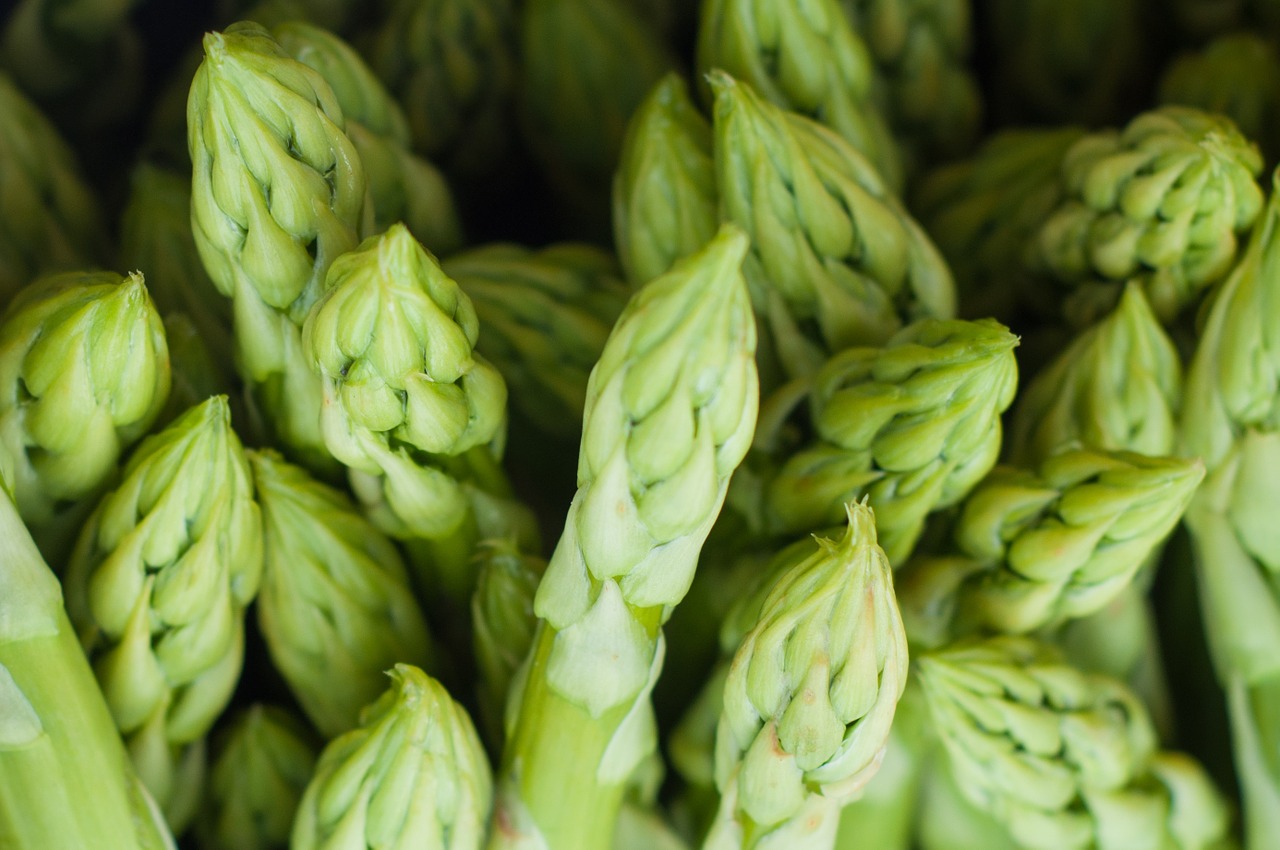
Cutworms will feast on many of your garden veggies. A few of their favorites are:
When cutworms find your crops, they frequently begin by feeding on the stems. They’ll tunnel through them or cut the stem in half at the base.
They munch on your vegetable garden during the warmer months while feasting on weeds and grass during the colder months before hibernating.
Their most common feeding time is as the sun is setting, or they made feed all day when it’s cloudy.
How to Prevent Cutworms
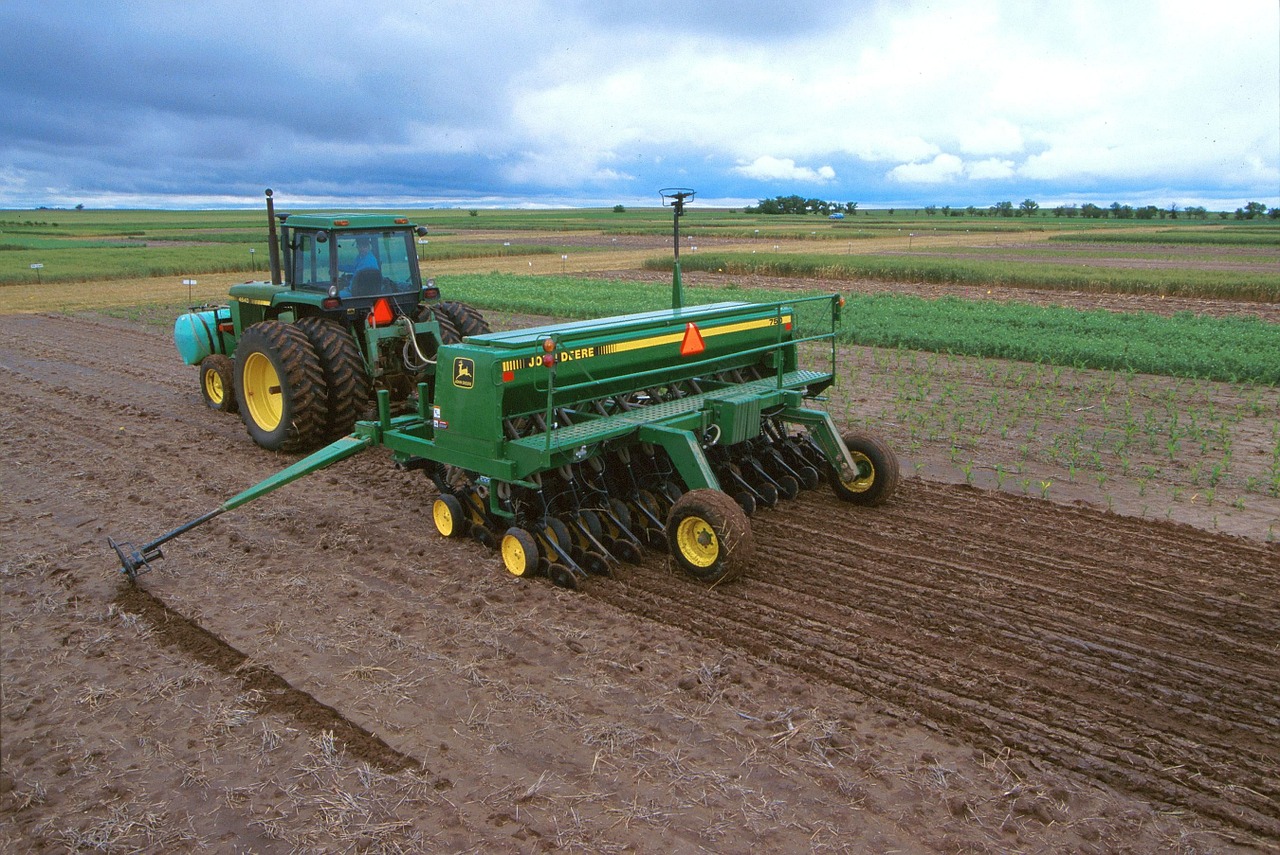
You can prevent cutworms from attacking your garden by following a few tips. Here’s what you should try if you want to prevent cutworms:
- Till your garden before winter moves in and till it again prior to planting. This will unearth the eggs, and the freeze will help kill them before they hatch.
- Wait to plant until after the cutworms have hatched and are moving about. If you don’t give them a food supply, they’ll die.
- Keep grass and weeds out of your garden and kept short around your garden. You’re limiting their space to lay by doing this.
- Invite birds and fireflies into your garden because they’re natural predators.
- Plant sunflowers around the perimeter of your garden. Cutworms love them and will eat them instead of feasting on your vegetables.
How to Stop Cutworms in Their Tracks
Life happened, and you couldn’t prevent cutworms from surviving and thriving in your garden. Now what?
There are a few easy steps you can take to eradicate cutworms in your garden. Try these helpful tips:
1. Make Them Eat Their Wheaties
If you make a mixture of cornflakes or bran-based cereal with caterpillar insecticide and molasses, you’ll make something the cutworms will love.
When they feast on this mixture, they’ll ultimately die. Sprinkle it on the surface of your garden and wait.
2. Put a Collar on It
Plant collars are one of the best ways to keep cutworms at bay. You place a circular collar made of cardboard around the base of your plants.
It should be approximately four inches in diameter. The cutworms will no longer be able to get to the stem of the plants.
3. Pick Them
If you walk through your garden as the sun is going down, you may see cutworms working their way through your garden too.
Put on some gloves, pick them off your plants, and place them in a cup. They make excellent chicken feed for your laying hens.
4. DE to the Rescue
Diatomaceous earth is a natural product which is great for many things. One of which is keeping your garden pest free.
Sprinkle a little DE around the base of your plants in a circle. When the cutworms cross it, they’ll be sliced, diced, and dried out.
5. Insecticide
If cutworms have begun ravaging your garden, it’s time to pull out the insecticide. Follow the instructions on the bottle for best results.
Spray your garden and hopefully, the pests will either die or move out of your gardening space. This could be a straight-forward method for solving your cutworm problem.
You now know how to recognize cutworms in your garden, how their lifecycle works, how to prevent cutworms from moving into your garden, and how to treat them if you already have an infestation.
It’s our hope this information will help you better protect your garden and enjoy the fruits of your labor.
If cutworms go unchecked, they can ravage your garden and waste all the effort you’ve put into gardening up until this point.
We wish you all the best and hope you produce a bountiful harvest for you and your loved ones this growing season.

